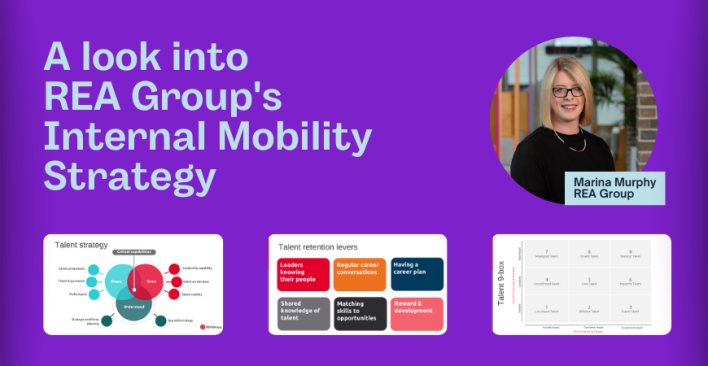Unlocking the Benefits of Workforce Planning

At the core level, enterprises desire and need great talent to succeed. If you employ people who are smart, capable and passionate about what they do, you greatly improve your organisation’s chances for long-term success. But no great staff falls into place simply through random chance. Great talent, and the organisational success that follows from it are almost always the result of careful planning.
It should be common sense that workforce planning is the key to ensuring you have the right talent in place and plans for ensuring you always have the skills and competencies necessary for organisational success. But, you’d be surprised at how many organisations struggle with this concept. Either they don’t understand the benefits that planning deliver or there are problems in execution. Either way, companies and government agencies that fail to map out a comprehensive strategic plan are placing their organisations at risk.
[bctt tweet=”Unlocking the benefits of #WorkforcePlanning doesn’t happen through chance says @JoeAbusamra” username=”ATCevent”]
The benefits of workforce planning
There are many organisations today, unfortunately, that go about meeting their staffing needs using a relatively slipshod process. Rather than craft a long-term plan of attack, they focus more on getting by from day to day, adding or replacing a person here and a person there without looking at the big picture. Faced with unexpected departures and retirements, it’s a reactive rather than proactive approach.
 This is seemingly the easy way to do things, but it’s not optimal or thoughtful — or really even the easy way, given that it leads to so many other problems through talent shortcomings. According to the Queensland (Australia) Public Service Commission (PSC), there are many benefits that come from planning more carefully. The most important one is simply aligning your people with your organisational goals – whatever your agency or company wants to accomplish in the long run, you need to make sure your talent is up to the challenge. In addition, workforce planning can help detect and solve skills gaps, as well as help you win out attracting great talent.
This is seemingly the easy way to do things, but it’s not optimal or thoughtful — or really even the easy way, given that it leads to so many other problems through talent shortcomings. According to the Queensland (Australia) Public Service Commission (PSC), there are many benefits that come from planning more carefully. The most important one is simply aligning your people with your organisational goals – whatever your agency or company wants to accomplish in the long run, you need to make sure your talent is up to the challenge. In addition, workforce planning can help detect and solve skills gaps, as well as help you win out attracting great talent.
With all of this in mind, the Queensland PSC recommends an overhaul of the workforce planning process. The commission’s study found that organisations will be in much better position to succeed if they align their employees with their goals, identify their current talent shortcomings and build a stronger talent pipeline.
Overcoming barriers to planning success
On paper, it looks fairly clear that improving workforce planning is a constructive step for any organisation. It must be asked, therefore – why aren’t more executives doing embracing better, more sophisticated workforce planning. What’s holding them back?
 According to the Society for Human Resource Management (SHRM), there are a few common barriers that get in the way. One is the time frame required – many fear that they won’t be able to achieve their big-picture talent goals simply because they take too long to achieve. Other issues include concerns about data integrity, uncertainty about control and accountability over the process and questions about the appropriate level of attention to detail required.
According to the Society for Human Resource Management (SHRM), there are a few common barriers that get in the way. One is the time frame required – many fear that they won’t be able to achieve their big-picture talent goals simply because they take too long to achieve. Other issues include concerns about data integrity, uncertainty about control and accountability over the process and questions about the appropriate level of attention to detail required.
All of these issues are real, but they can be overcome. In the long run, the organisations that invest in better planning will be the ones that get ahead and succeed in the long run — consistently.
How will you get started?
There’s no better time than the present to dive into workforce planning and start building a smarter and more proactive organisation. This process might seem daunting and complicated, but it can be done. Human resources expert Ralph Christensen, in his book “Roadmap to Strategic HR,” wrote that the first step is to identify the number of people you need and the skills you’re looking for from each one. Once you’ve done that, you can start crafting a strategy to attract them and bring them into your organisation. Today, the best analytical tools that can help you achieve these goals have the sophistication needed to provide deep insight without requiring a high level of technical aptitude to use.
[bctt tweet=”The #WorkforcePlanning process might seem daunting, but it can be done says @JoeAbusamra” username=”ATCevent”]
Sourcing talent, like procuring anything else in this world, is a matter of observing basic economic principles like supply and demand, and combining that data with your organisation’s unique situation, as well as external market forces. If you know what you need — now and in the future — and understand the accompanying interacting forces — your organisation will be well positioned to succeed in the long run. That’s why workforce planning begins with understanding not only the situation within your company, but the greater economic forces surrounding you. With that information at your fingertips, you can then make informed decisions about your organisation’s future.
Images: Shutterstock
This article is sponsored by Acendre.
We’ve put together a Workforce Planning expert panel & we’ll be asking them our questions & YOURS during a free webinar on 30 November 2016. Don’t miss this great learning opportunity. Register today!
Related articles
Leave a Reply
Sign up to our newsletter
Get a weekly digest on the latest in Talent Acquisition.
Deliver this goodness to my inbox!



